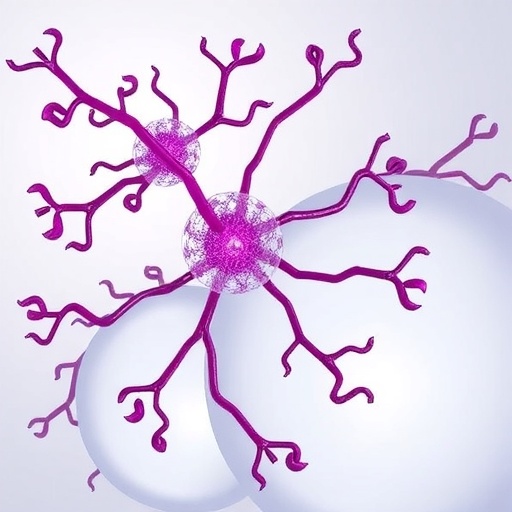Recent research has illuminated the complex interplay between molecular pathways that contribute to chemotherapy resistance in lung squamous cell carcinoma (LUSC). A pivotal study by Liang, Li, and Chen, published in Biochemical Genetics, explores the significant role of the FXR1-FUBP1 axis. This research provides crucial insights into therapeutic strategies against one of the most challenging forms of lung cancer, which remains a leading cause of cancer-related mortality worldwide.
The study underscores the alarming reality that chemotherapy is often rendered ineffective due to the cancer cells’ ability to adapt and resist treatment. LUSC cells exhibit a robust survival strategy, making the identification of molecular mechanisms like the FXR1-FUBP1 axis essential in understanding and dismantling these defenses. FXR1, a member of the heterogeneous ribonucleoprotein (hnRNP) family, has been implicated in regulating various cellular processes, including RNA metabolism, cell proliferation, and apoptosis. Its interaction with FUBP1, a known regulator of c-Myc, is particularly significant in the context of cancer biology.
In the context of their study, Liang et al. meticulously employed various experimental techniques, including Western blotting and RNA sequencing, to unravel the mechanisms driving chemotherapy resistance. They demonstrated that FXR1 facilitates the stabilization of FUBP1, thus enhancing its interaction with c-Myc mRNA. This stabilization results in increased expression of c-Myc, a pivotal transcription factor that drives cell proliferation and survival, contributing further to chemoresistance observed in LUSC.
The current landscape of chemotherapy effectiveness is grim, with many patients experiencing progression of their disease despite treatment. This stagnation underscores a pressing need for innovative strategies that can sensitize these cancer cells to conventional therapies. The elucidation of the FXR1-FUBP1 axis opens new avenues for targeted therapeutic interventions. By inhibiting FXR1 or disrupting its association with FUBP1, it may be possible to destabilize c-Myc levels, thereby re-sensitizing LUSC cells to chemotherapeutic agents.
Moreover, the implications of this research stretch beyond merely improving clinical outcomes for LUSC patients. It serves as a prototype for similar investigations into other cancer types where chemotherapy resistance poses a significant barrier. The findings emphasize the importance of a molecular approach to understanding tumor biology, prompting researchers and clinicians alike to consider more personalized treatment regimens.
One of the most compelling aspects of this research is the potential for the development of novel therapeutic agents aimed specifically at the components of the FXR1-FUBP1 axis. The targeted inhibition of these proteins could prove to be a game-changer in overcoming the mechanisms responsible for therapy resistance. As our understanding of cancer progresses, the need for precision medicine tailored to individual molecular targets has never been clearer.
The authors of the study further elucidate that targeting the FXR1-FUBP1 axis not only presents a viable strategy for enhancing chemotherapy efficacy but also raises the prospect of repurposing existing drugs used in other contexts. This approach could drastically reduce the time and cost associated with bringing new drugs to market, a significant advantage considering the urgent need for effective cancer therapies.
Emerging technologies such as CRISPR gene editing and RNA interference offer transformative tools that could be harnessed to disrupt the FXR1-FUBP1 interaction. Such advancements could lead to breakthroughs in preclinical and clinical settings, significantly contributing to our arsenal against chemotherapy-resistant LUSC.
As researchers continue to decode the complexities of cellular signaling and gene regulation, collaborations between biologists, pharmacologists, and oncologists will be critical. This multidisciplinary approach will facilitate the translation of laboratory findings into clinical practice, ensuring that discoveries made in the research setting can benefit patients in real-world scenarios.
This study serves as a compelling reminder of the persistent challenges in the realm of oncology. The findings presented by Liang and colleagues underscore the importance of sustained research efforts aimed at understanding the molecular underpinnings of cancer. The fight against LUSC and other malignancies is far from over, but studies like this offer hope and pave the way for innovative strategies that can improve patient outcomes.
In conclusion, the discovery of the FXR1-FUBP1 axis as a key player in chemotherapy resistance in LUSC cells is a significant leap forward in cancer research. These findings not only broaden our understanding of molecular interactions in cancer but also emphasize the urgency of developing therapeutic strategies to tackle this formidable disease. As the fight against cancer continues, every piece of information gained is a step closer to achieving effective treatments and ultimately, saving lives.
Subject of Research: The impact of the FXR1-FUBP1 axis on chemotherapy resistance in lung squamous cell carcinoma (LUSC).
Article Title: The Impact of the FXR1-FUBP1 Axis on Chemotherapy Resistance in LUSC Cells.
Article References:
Liang, R., Li, Y., Chen, J. et al. The Impact of the FXR1-FUBP1 Axis on Chemotherapy Resistance in LUSC Cells.
Biochem Genet (2025). https://doi.org/10.1007/s10528-025-11290-1
Image Credits: AI Generated
DOI: https://doi.org/10.1007/s10528-025-11290-1
Keywords: chemotherapy resistance, LUSC, FXR1, FUBP1, c-Myc, molecular biology, oncology.
Tags: c-Myc regulation in cancercancer cell survival strategieschemotherapy effectiveness in lung cancerexperimental techniques in cancer researchFXR1-FUBP1 axisheterogenous ribonucleoprotein familyinsights into lung cancer biologylung squamous cell carcinoma researchLUSC chemotherapy resistancemolecular pathways in cancerRNA metabolism and cancer survivaltherapeutic strategies for LUSC





